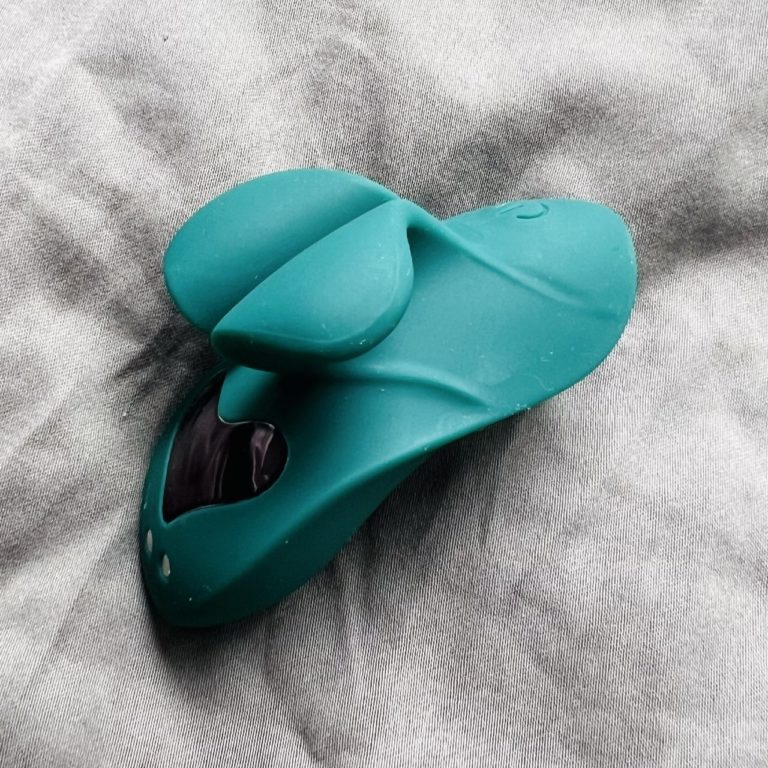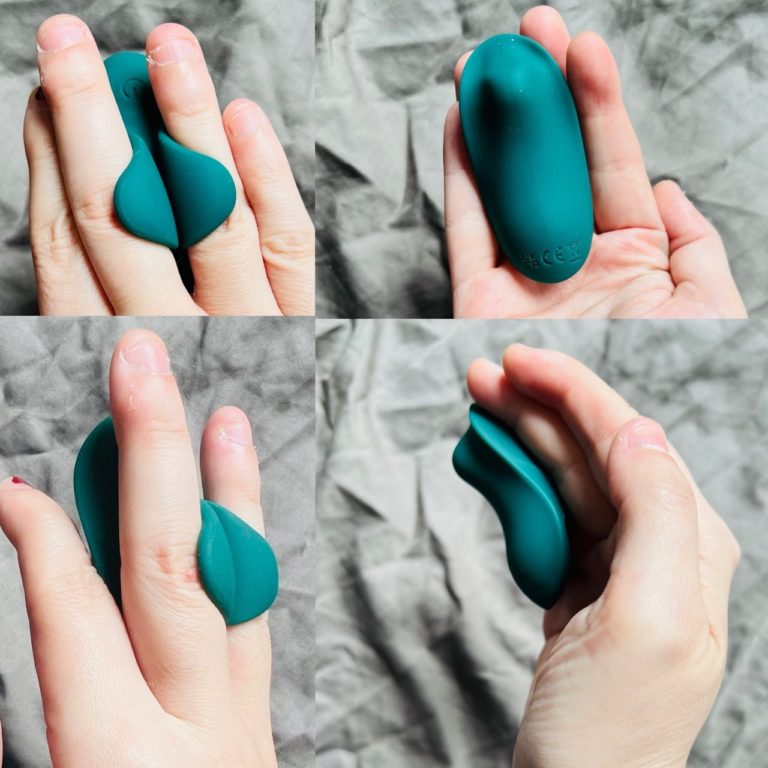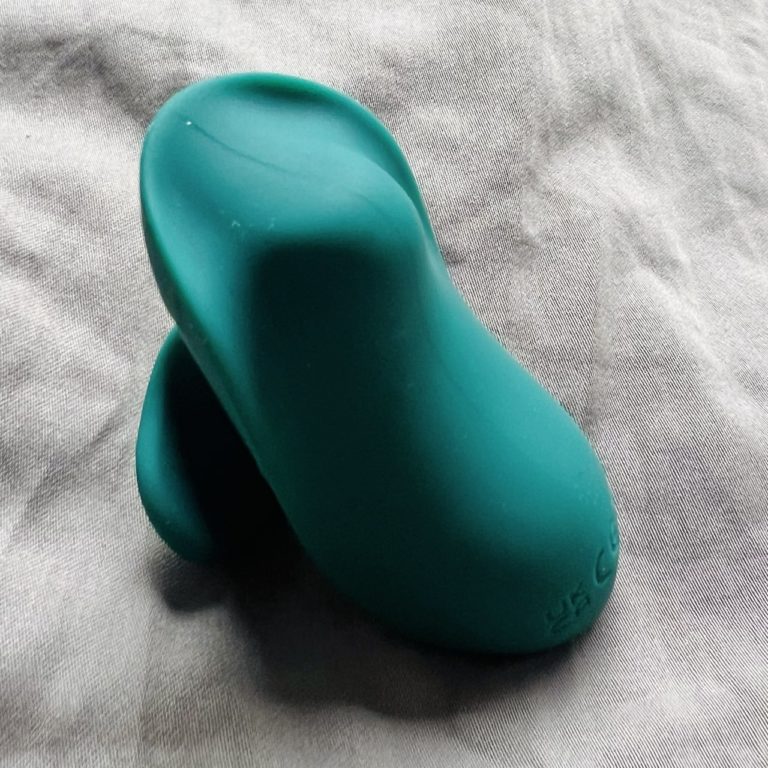
More companies should make sex toys that people with disabilities can use, because accessible sex toys are just better – and not only for folks with disabilities, but for everyone. Let me explain.
My spouse once gave a talk about accessibility in software, in which she described the curb cut effect: the phenomenon where features developed to be disability-friendly will end up benefiting a much larger population, too. Think, for example, of how an automatic sliding door can improve accessibility for people who use wheelchairs or mobility scooters, while at the same time, making it easier for able-bodied people to walk through the door if they’re, say, carrying two armloads of groceries, or wheeling their child in a stroller.
By that same token, I’m strongly in favor of more sex toy companies developing products that are accessible to all kinds of people, because we all benefit from those types of design choices, sometimes even in unexpected ways. Let’s talk about one such case, the Funzze Finger Vibe.

What is the Funzze Finger Vibe, and why is its accessible design potentially beneficial for everyone?
Funzze’s got quite a wide catalog of products, but the Finger Vibe caught my eye immediately, because it looked like it would be comfortable for me to hold, even on days when my hands are aching from fibromyalgia. It’s shaped like a fairly standard clitoral vibe, except that it has two little “wings” on the back which allow you to hold the toy between two fingers easily, without needing to apply much pressure to keep the vibe anchored in your hand. This could make this toy potentially much easier to use than standard clit vibes for people who struggle with muscle strength/mobility issues and/or chronic pain in their hands, myself included.
That being said, even if you’re able-bodied and able-handed(!), you can still find value in toys like these. Anyone seeking an “unobtrusive” toy, a toy that lets you forget you’re even using a toy, might consider getting a finger vibe – because once you’re accustomed to how the toy feels in your hand, it can (sometimes) feel like you’re just touching your partner (or yourself) the way you normally would, but with some vibration magically infused into your touch. It can be a much more intuitive and “natural”-feeling way of working some vibration into the mix.
But to sum up the actual specs: the Finger Vibe is a rechargeable, silicone and ABS plastic vibrator with 9 vibration settings.

Things I like about this toy
- First of all, I feel like I need to mention upfront that it costs THIRTY DOLLARS. That’s a steal for a decent and versatile rechargeable vibe, and I have to keep its price point in mind when assessing it.
- I really like the design of it, on both visual and tactile levels, from the stylized silicone “wings” that remind me of butterflies, to the shiny plastic heart panel just below them, to the way the toy feels in my hand. It’s comfortable, cute, and cool. My hand never gets tired from holding onto it, and it’s easy on the eyes, too. The wings have enough flexibility that they should be able to fit a broad range of finger sizes, and they’re designed in such a way that I almost never lose my grip on the toy.
- Specifically, I really like the contoured shape of the part that goes on your clit (or whatever other pinpointed body part you’re aiming this toy at). It’s well-shaped for the purpose and allows me to hit my clit without needing to hold my labia out of the way, as some flatter vibes require.
- Crucially, the button is placed in a location that actually makes sense. I’ve previously tried a vibe very similar to this one, which had a button in a hard-to-reach location that required me to use my other hand to press it, every single time. With this one, the button is located comfortably within reach of my middle fingertip when I’m holding the toy, but it’s tucked out of the way just enough that I never hit it by accident.
- It’s waterproof, which is always great. I could see this toy being a fun addition to shower sex, for people who are into that, because the grippy silicone wings would help it stay in place between your fingers. (Funzze’s website describes this toy as giving you “easy, no-slip control, even when wet and frantic.” Now that’s good copy, baby!)

Things I don’t like about this toy
- The biggest issue, unfortunately, is the motor. It’s buzzy, i.e. the vibrations are higher-pitched and more surface-level than I’d prefer, so I end up feeling a bit numb after a minute or two, and the orgasms are never as satisfying as they would otherwise be. However, stroking the vibe up and down or in circles, as if it were a vibrating fingertip (which is probably the intended way to use it), mitigates these effects to some extent – and I do have to point out here again that this toy costs thirty dollars, so I understand why the motor’s not exactly heavy-duty.
- While there are 9 vibration settings, only the first 3 of them are steady vibration, and the jumps between them are jarringly wide; the next 6 are patterns, many of which are distractingly erratic. You have to cycle through all 9 settings to get back to the first one, a personal pet peeve of mine.
- Despite the button’s good placement, I sometimes find it too difficult to press with one finger, which can negate some of the toy’s accessibility at times.
- It’s a little on the loud side, as buzzy vibrators tend to be, especially on its highest setting.
Final thoughts
If they put a deep, rumbly motor in the Funzze Finger Vibe, it would earn an immediate upgrade to the top drawer of my nightstand, and would probably stay there for a very long time. The design of this toy is sleek and thoughtful, and I find it comfortable to use most of the time, which I can’t say for a lot of vibrators.
For all its sexy unobtrusiveness in size, shape, and ergonomics, though, its buzzy motor and notable noise level put a bit of a damper on things.
But for $30, I think the Finger Vibe is a fair deal, and I always love to see more companies making sex toys that are accessible to a wide range of people – accessible not only in terms of disabilities, but also in terms of finances. And to that end, this is a highly heartening little vibrator that I think could add some buzzy pizzazz into a lot of people’s sex lives, without breaking the bank – or their fingers.
This post was sponsored, meaning I was paid to write a fair and honest review of the product. As always, all writing and opinions are my own.




 There’s a term I love, “access intimacy,” which I learned from some kink workshop at a conference long ago. (I can’t recall who introduced me to this concept, or I would credit them.) It refers to the intimacy you can have with people who recognize and meet your access needs – whether those needs are related to physical disabilities, such as requiring ramps and access to handicapped bathrooms, or mental-emotional issues, such as needing to avoid certain PTSD triggers or needing a slow approach to task-switching due to ADHD.
There’s a term I love, “access intimacy,” which I learned from some kink workshop at a conference long ago. (I can’t recall who introduced me to this concept, or I would credit them.) It refers to the intimacy you can have with people who recognize and meet your access needs – whether those needs are related to physical disabilities, such as requiring ramps and access to handicapped bathrooms, or mental-emotional issues, such as needing to avoid certain PTSD triggers or needing a slow approach to task-switching due to ADHD.